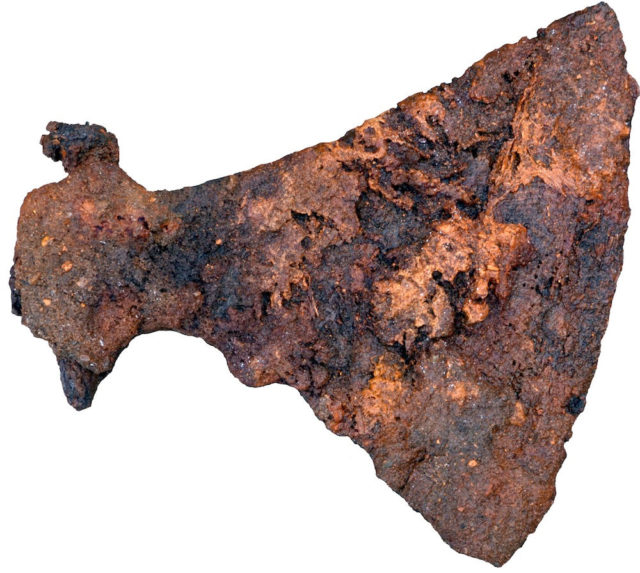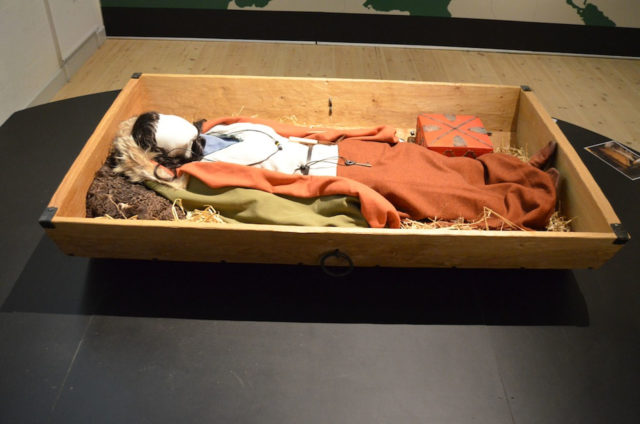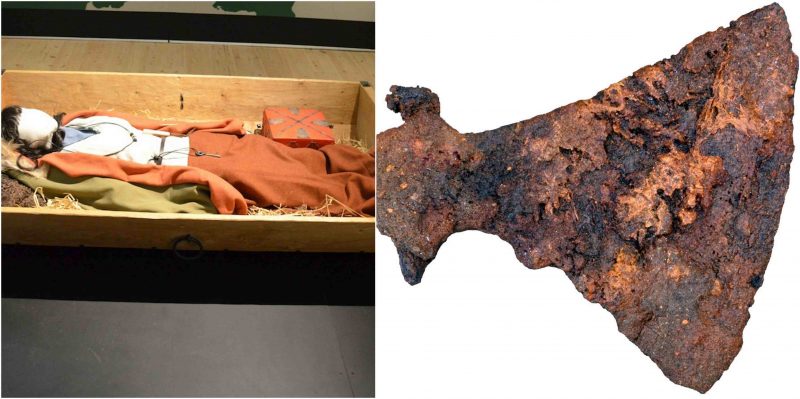One of the biggest Dane axes ever discovered was found by archaeologists from a 10th century Viking tomb close to Silkeborg, central Denmark.
An archaeologist at the Silkeborg Museum, Kristen Nellemann, is guiding the digging at the location close to the town of Haarup. She has stated the Danish axes like this one discovered in the tomb were the most feared weapons of the Viking period.
It was an extraordinary weapon – far larger and heavier than other axes. This weapon would have a very long handle, and it would have taken both hands to use. The simplicity of this fearsome weapon suggests it was not just for show.
This particular man was buried only with his axe; it appears that he identified himself as a warrior above everything else. But the ax was only one of the artifacts that were found in this Viking tomb. Known as an ordodehus, which translates as “death house” in Danish, the tomb included a wooden palisade or roofed structure. It was about 4 meters wide (13 feet) and 13 meters (43 feet) long, and built around the two graves.
There were three people found in the tomb, but one was a wealthy Viking woman. She was buried in a wooden cart, similarly to the reconstruction located at the Sikeborg Museum.

The tomb was created about 950 AD, for the burial of a woman and man of obvious distinction. The individuals were identified by their belongings and their clothing, as the only human remains that endured the centuries was a single black human hair, discovered on the woman’s clothing.
The woman had been buried lying inside the wooden wagon, a tradition for females of noble birth at that period in time. A pair of keys was discovered inside the tomb, which indicated that she was one of the leading people in the community.
Keys were the symbol of authority, and dividing for women in Denmark as well anywhere else in Europe throughout the time of the Middle Ages.
One of the keys was for a small wooden casket that was bound with iron brackets and buried along side of the woman. She also had silver and gold threads sewed into her clothing.
Viking “power couple”
The woman and man in the tomb might not have been wife and husband, yet they were obviously the local “power couple”. Incredibly, these two people, each in their individual grave, are placed inside the same building.
Archaeologists can’t say it is not a sister and brother, but it could possibly be a wife and husband relationship. Either way, these two were in charge – the noblest people of the local area.
At some point in time, a second man was buried in the grave inside a wooden structure that was added to the primary tomb. This man was also buried with an axe. It was not as big as the axe from the other man, and so the second might have been a successor or relative of the first man.
International connections
Some other discoveries from the tomb, and other locations in the Haarup, show that the local Vikings most likely had some international connections, either through travel or trade, according to the archaeologists.
The woman

that was in the tomb was buried with a decorative cup from the Baltic region. Two silver coins of the Middle Eastern kind known as dirhams were thought to be from an area in what is is now known as Afghanistan.
These were discovered in the grave of another Viking woman buried close by.
More construction goes on in the location, and more archaeological findings are being made. Artifacts have varied, being from Danish medieval periods and the Iron Age, as well at the Viking Age of the 10th century.
Archaeologists have only discovered the burial sites, and have not yet discovered their house, so they only know the subjects from their graves. They know they definitely once lived there, yet they have not found the specific spot.
Further archaeological examination from Harrup will mainly focus on the four various kinds of woven cloth discovered in the graves, as well as the small casket in the leading woman’s grave, and the sole black hair discovered inside her clothing. This could potentially be a source of DNA that may provide more clues about the owner.
